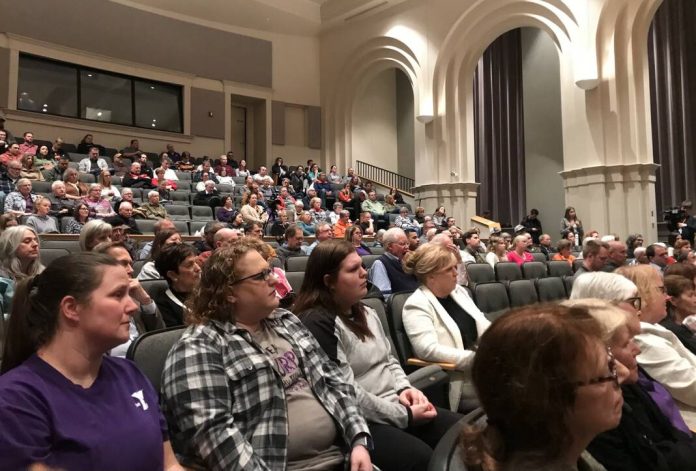BLUFFTON — A concerned public questioned the future of Bluffton University during a town hall Tuesday about the school’s anticipated merger with the University of Findlay.
Bluffton University President Jane Wood and University of Findlay President Katherine Fell spent more than an hour fielding questions — Why wasn’t the merger made public sooner? Why should donors continue giving to Bluffton? Will Findlay’s ROTC program come to Bluffton? — about how the pending merger will affect the Bluffton campus.
“We did not want to keep it secret,” Fell said.
Discussions started roughly one year ago amid concerns about a college enrollment cliff, culminating in a memorandum of understanding signed by the boards of trustees from both the University of Findlay and Bluffton University last Tuesday to initiate the pending merger.
Plans became public the following day.
The schools are now waiting for approval from accrediting agencies including the Higher Learning Commission, Ohio Department of Higher Education, U.S. Department of Education and NCAA, which could take 12 to 15 months.
Bluffton and the University of Findlay will remain independent during this phase.
If all goes as planned, the schools will become one academic institution on two campuses by the fall of 2025.
Fell will assume the role of president of both institutions, while Bluffton University will create a new leadership structure including a chief executive officer.
Wood said she will remain as president of Bluffton University until the merger is final.
Asked what will prevent future trustees from selling Bluffton University, Fell said the University of Findlay is not interested and does not need the cash.
“The reason for merging would not be to gain physical assets that we can turn around and sell,” she said.
“We believe what Bluffton University offers, along with in conjunction with what the University of Findlay offers, sets us up to keep attracting enough students and even more students to be in business for decades to come and to avoid the struggles that will come in three to five years when there are even fewer students applying to college.”







